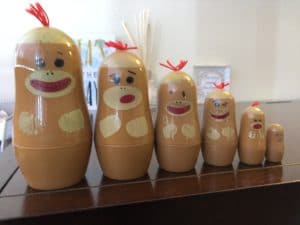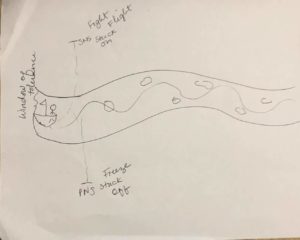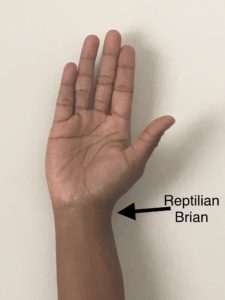I am a firm believer that my number one trauma treatment tool is my relationship with my client. With that being said, I do have my other tools that I use consistently. I like things that make the complicated stuff simple. Here are three of my favorite “go-to” tools.
The 3 Tools
Tool #1: Nesting Dolls
These adorable sock monkeys have been traveling with me for many years. They have been to four states thus far. They are losing their faces, but hey, that shows love and attention. I use these to help clients understand inner child work, Dialectical Behavioral Therapy, and Internal Family Systems work. We talk about our most grownup self or wise self and all the parts that live inside. It is a great visual for clients to have.

Tool #2: The River of Life Diagram
I have been considering making a reusable form of this tool because I use it so much. If you look in my to-be-shredded pile you will see nothing but sheets with this drawing on it. I am all about reduce, reuse, and recycle. I learned how to use this diagram while training in Somatic Experiencing. It takes the window of tolerance, hyperarousal, and hyperarousal concepts and brings them to life. This helps the clients learn to track their own nervous system and start to identify when they are reaching their activation limits.

Tool #3: My Hand
I use the “Hand Model” developed by Dr. Daniel Siegel to help clients understand the basics of the brain and trauma. Talk about taking some high-level stuff and making it super simple. You can get a cheat sheet that I made here to help you walk through the hand model. I also wrote a blog on the topic of trauma and the brain, which can be found here. Lastly, on my Facebook page, there is a demonstration of me using these materials. You can check that out here.

In Conclusion
Well there you have it..these are my favorite tools I use in trauma treatment. I think taking the complicated stuff and making it simple helps my clients understand their experiences better and connect with me better. Those are two of my main goals when treating trauma. Using tools is a win in my book!
Comment Below:
What are your favorite go-to tools for trauma treatment?

